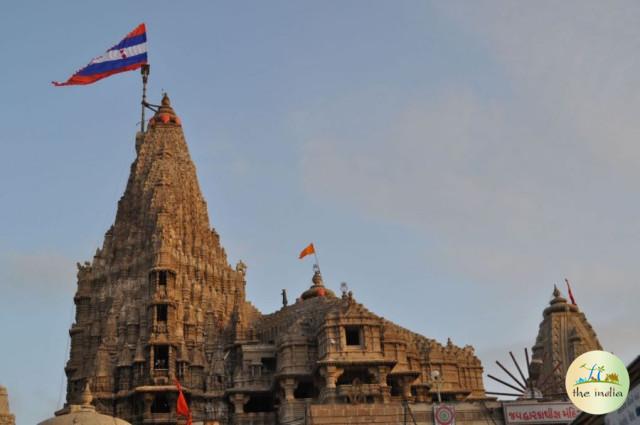Girnar: The Call From The Top
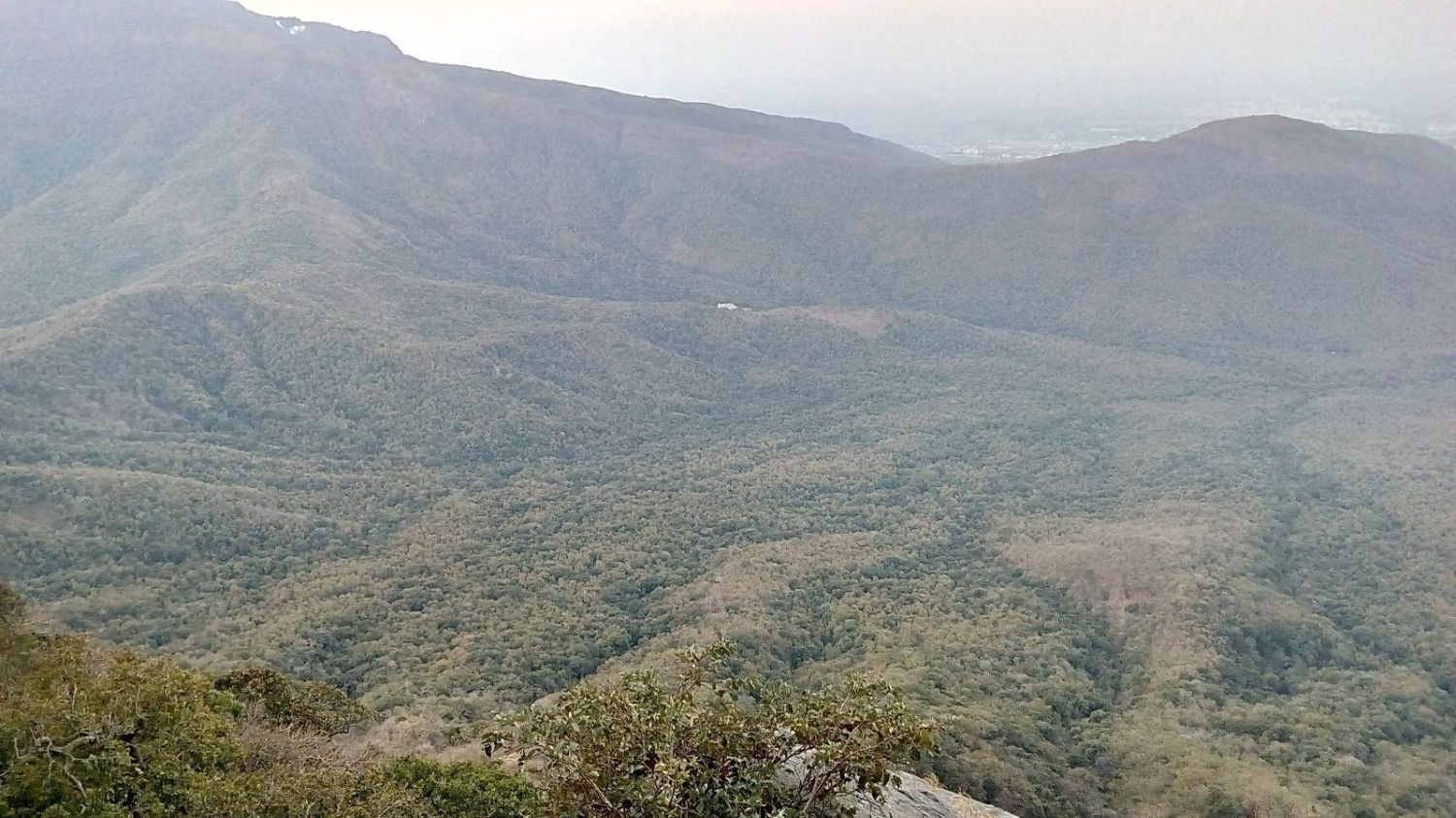
Published: byMayank Batavia,06 Mar, 2017
Places I explored :
Girnar ParvatMy companions and I are standing huddled up, the piping hot coffee in our hands providing warmth in the cool, if not downright chilly, air. There are about three hundred people all around, in different stages of readiness. Some hundred yards away there stand a few buses, from Maharashtra and Rajasthan, that carried families and groups.
Sleepy eyed children stare with awe at the faint lights on the summit. Grown-ups are chattering, the ones who ™ve been here earlier sharing advice and experiences.
Newly-weds couples are looking forward to divine blessings, talk to each other softly. Vendors selling a variety of articles are doing brisk business.
A few œdoliwalas , who offer to carry pilgrims all the way to the top in their œdolis , are haggling with the Rajasthani families. Their banter is more cheerful than commercial, and the hodgepodge of Gujarati, Hindi and Marwari dialects provides a chirpy entertainment to the rest of us.
Nothing unusual about it. Except that it 's 5 in the morning. That 's Girnar for you.
George Mallory, the famous English mountaineer, was once asked
œWhy did you want to climb Mount Everest?
He is reported to have uttered what have now become the three most famous words in mountaineering,
œBecause it 's there.
While the authenticity of the answer has been debated, the spirit behind it certainly isn ™t.
Girnar is the collective name used for the mountain range that is spread over a large part of the Junagadh district. (The city of Junagadh itself can be a delight for the student of architecture and history, but that is a story for another day.)
Firstly, some quick, basic facts:
¢ Girnar is a mountain range in Saurashtra (the central-western part of Gujarat).
¢ It is older than the Himalayas.
¢ It houses Hindu, Jain and Muslim shrines.
¢ Also known as Girnar parvat which is spread chiefly over the Junagadh district.
¢ Height: (Ambaji temple) approximately 3330 ft
¢ And, let this not scare you, sightings of large cats like the leopard is not rare on parts of the mountain.
As of now, there are no cable-cars on Girnar so technically there are two options to climb:
1. Use the steps, from the base to the top: about 3,500+ steps to the Jain temples and around 5,000+ to the ancient Ambaji temple. Most people choose this option because of the relative convenience, safety and the huge number of co-travelers one gets to meet.
2. You can trek your way up from the smaller forest-regions near the base. Firstly, there is no established trail. That makes it easy to get lost. And besides, the trek has its own share of wild animals. Not recommended at all unless you are an expert yourself or are with experts; very few people choose this option.
This post uses the word climbers in a general sense anyone who climbs Girnar parvat. Most aren ™t trekkers; they use the properly laid out steps instead. We are one of them.
We are near the base (called œTaleti in Gujarati) of Girnar. There is a walled gate with an arch over it, properly marking our starting point. With no less than sixty people starting their journey at the same time as us, the ten-feet opening is pleasantly crowded. There is a roar of varied chants. We take another look at the distant summit, bow our heads on the first step (more with a plea for stamina than out of devotion ïŠ) and set on our journey.
Climbing a small mount is one story; climbing a full-sized mountain is quite another. It requires a good deal of physical strength and stamina (no prizes for guessing this one) plus some zeal and determination. Good company is recommended, though not mandatory.
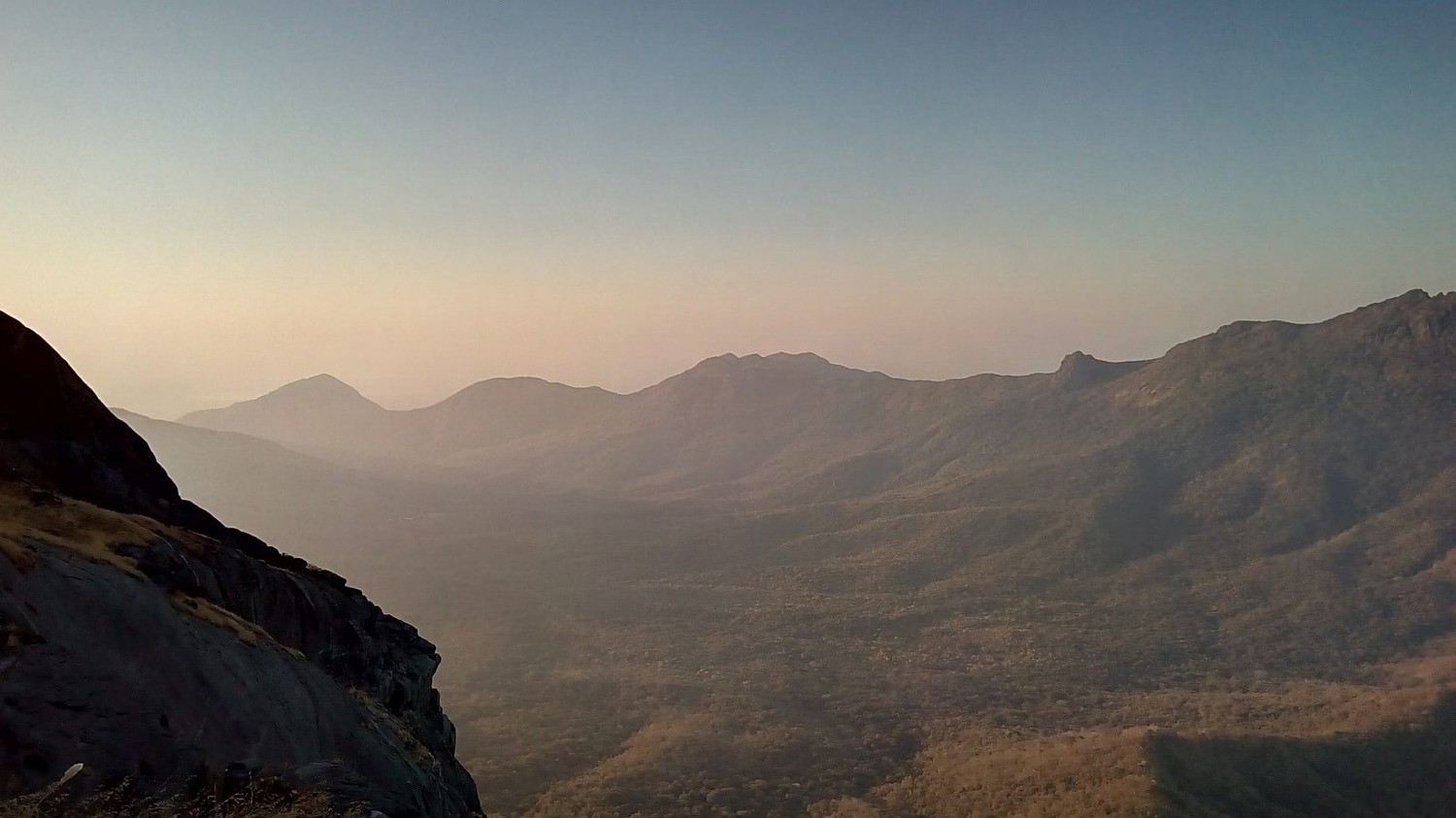
Since sunrise is about an hour-and-a-half away, the skies are all dark. But the shining lights of the smaller temples that dot the base overpower the darkness of the skies. And then, of course, there are the lights on way to the summit of Girnar itself. The atmosphere is infectiously energetic and one can ™t but enjoy the start.
The first 100 or steps actually take a lot longer, mainly because everybody is still with everybody else. People are charging forward with gusto that will soon be tested, and how. We almost jostle our way around, keeping our eyes on the steps all along. That 's because the well-worn steps that take a beating from millions of footfalls every year are certainly smooth and slippery, so you ™ve got to watch your step from the start.
It 's the second weekend of February, perhaps the best time of the year to climb Girnar. The atmosphere is on the cooler side without being discouragingly freezing. We ™re glad we are wearing light woolens (and I ™m glad I have my ear muffs as well). Another 100 or so steps and the crowds start thinning, each climber finding her own rhythm.
Soon we ™re about 200 steps up. My companions and I can distinctly hear each other 's heavy breathing a sort of secret confession that we ™ve been cheating on our gym. We take a quick break, stopping for about ten seconds. We stand in twos; anything larger and we ™d be blocking way.
Personal experience in the past and advice from veterans tell us we can take as many breaks as we want but we should never sit down. Once you sit down, the struggle suddenly turns mental and it becomes increasingly difficult to fight off self-doubts.
We look back at the seemingly incessant flow of climbers. People are already pulling out water-bottles, and it 's not even 5:30 in the morning yet.
We turn and resume our ascent. Another 50 steps or so and I feel my T-sheet is beginning to get moist. This amuses me sweating at such an early hour in single-digit temperatures.
While occasional lights on the steps keep you going the right way, there are patches where it 's actually dark. Once or twice we had to switch on our cellphone flashlights. The part of the mountain beyond lights looks like an amorphous lump. In fact, it 's so dark beyond our steps we can ™t even spot the trees everything 's so shrouded in the enchanting darkness.
While we have been stopping frequently for a few seconds on way, we take a slightly longer break half an hour later. There is a lone tea vendor. We stop by to rest under the pretext of tea. Most of our co-travelers have changed. As I said earlier, by 100 steps or so, people find their bearings and proceed at their own speed. That way, some fall back while some overtake you.
Everything around is drenched in moonlight. While it 's not dawn yet, we notice a subtle change in visibility.
Suddenly, winds suddenly grow stronger. I tighten my ear muffs. Almost every winter Girnar records temperatures that threaten to touch the magical zero degree Celsius. I am not too keen to witness that touchdown today.
We quickly finish our tea and resume. The warmth of the hot tea lasts for like half a minute. The wind has died out, but a little sting of the chill lingers on. A few doliwalas glide past us and some of us greet them by the now familiar chant of œJay Girnari .
Next, we are overtaken by a handful of school children in school uniform apparently they are on a school picnic. They are laughing and talking noisily. Their teacher, a man in his robust forties, catches up with us. We exchange pleasantries with him. He responds in a thick north-Gujarat accent that 's so out-of-place in Saurashtra.
The kids seem to love him. He has a wacky sense of humour and the physique of a farm-hand he doesn ™t seem to have even heard of fatigue. While he talks to us, his eyes are constantly glued to the children. Our pace slackens and the teacher moves on with the kids.
We are panting again and after another 100 steps or so we stop. But now there was a strong reason dawn was gently breaking. We can ™t resist taking a pic. The serpentine lights seem to stretch into infinity, while the moon overhead appears more like a headmaster ensuring the school-children walk in a proper queue.

I remind myself this is no Everest and that the air isn ™t getting thinner, but my out-of-training body remains unconvinced and noticeably amplifies my breathing. I click a pic and then it 's time to move on.
Girnar is literally steeped in ancient and medieval history for instance the Jain temples were built in the 12th century. Many centuries before that, Lord Krishna was pursued by the evil Kalayavana to Girnar, where the fiery gaze of Muchukunda killed Kalayanava. With such a rich history and myths, it 's no wonder you pass countless shrines, some known, some nameless, on your way to Ambaji.
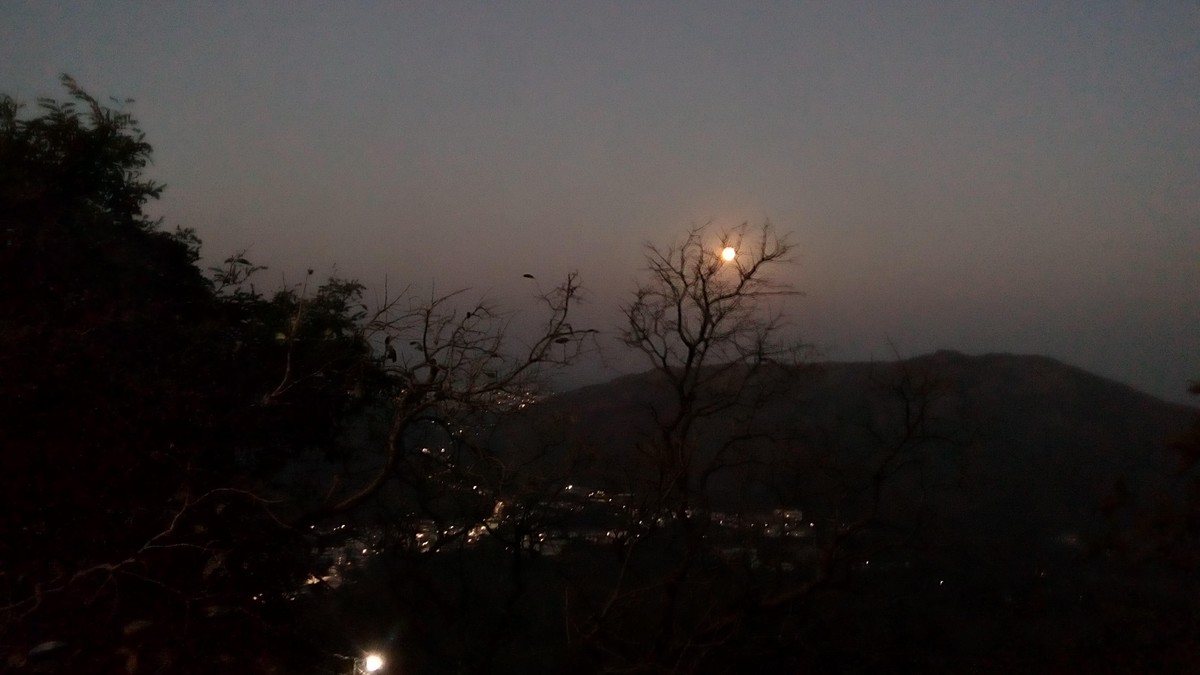
It 's already early morning. Freshness is in the air and we feel rejuvenated by the early rays of the sun. I believe this is the best time to enjoy the view; another couple of hours and it will start getting hot and tiring. Here are some pics.
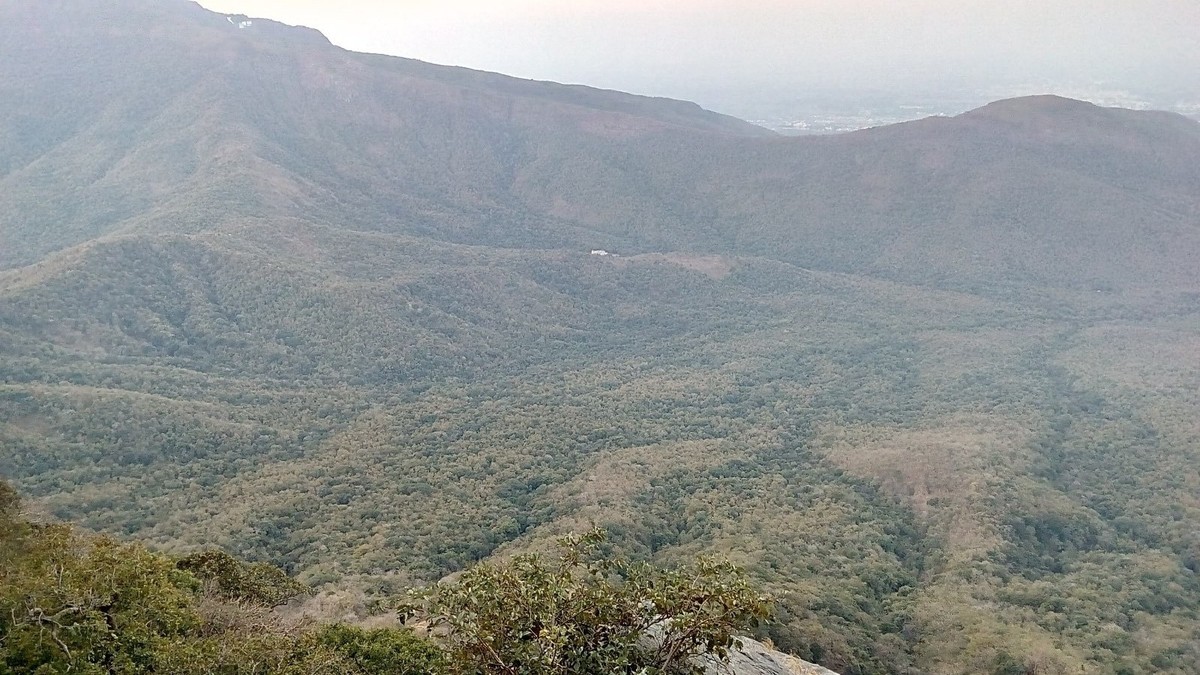
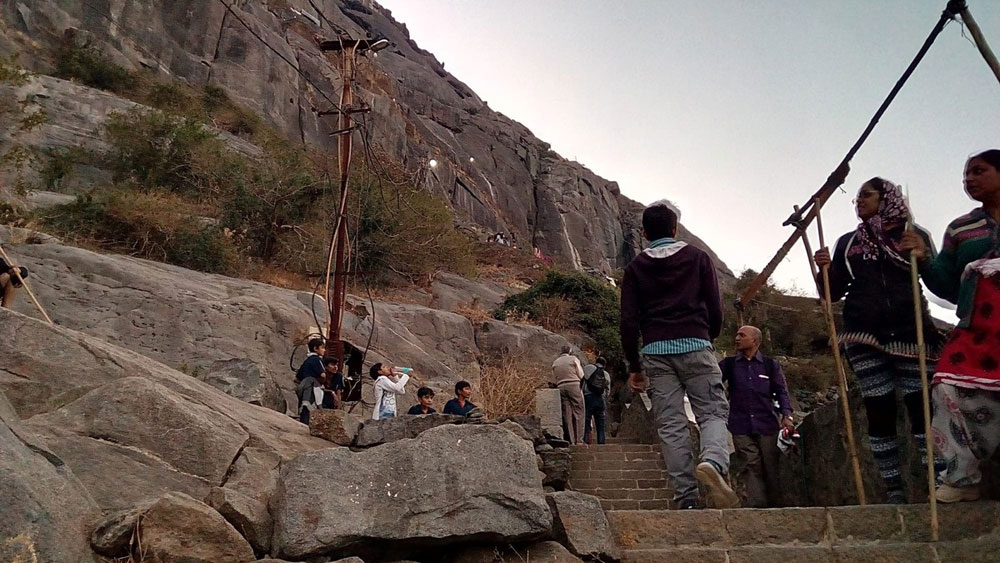
Two hours, multiple breaks and one Amul Kool bottle later, we reach the first major milestone the beautiful Jain temples. To me, this poetry etched in stones, darkened with ages, offers a divine splendor that can be better preserved. Surprisingly, we ™re somehow no longer tired after the 3,500-step ascent.


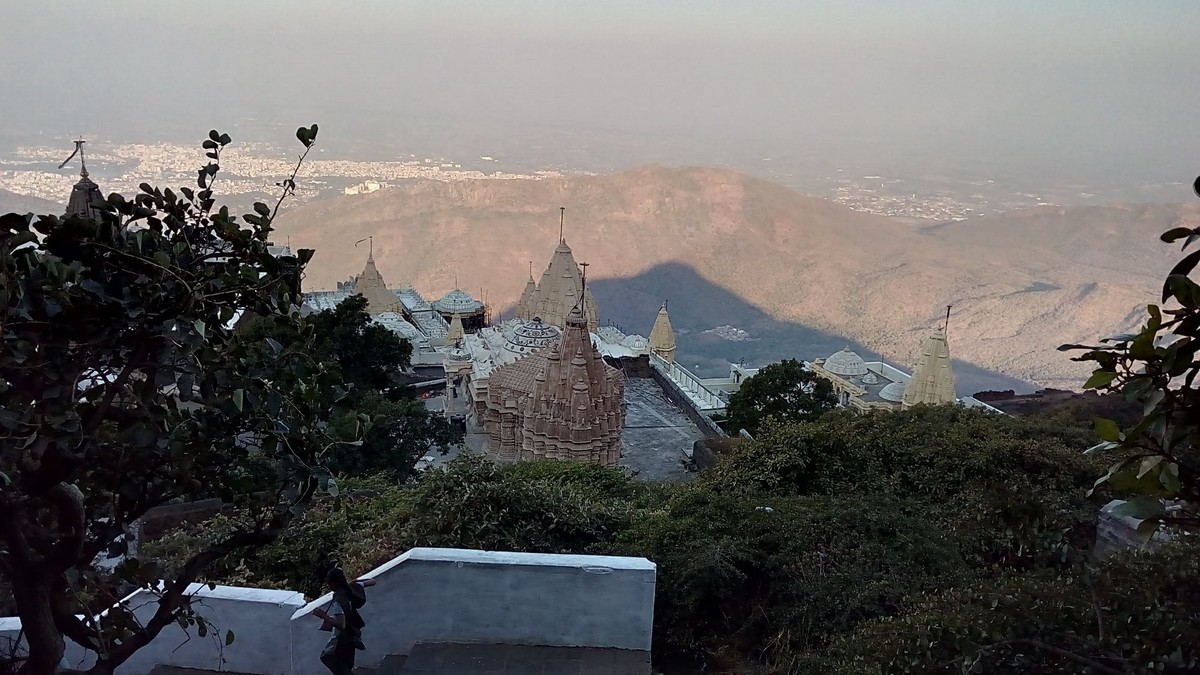
We continue our climb. The crowds have thinned out noticeably with most Jain families not planning to climb beyond. We are already meeting a number of people who are descending from Ambaji early starters.
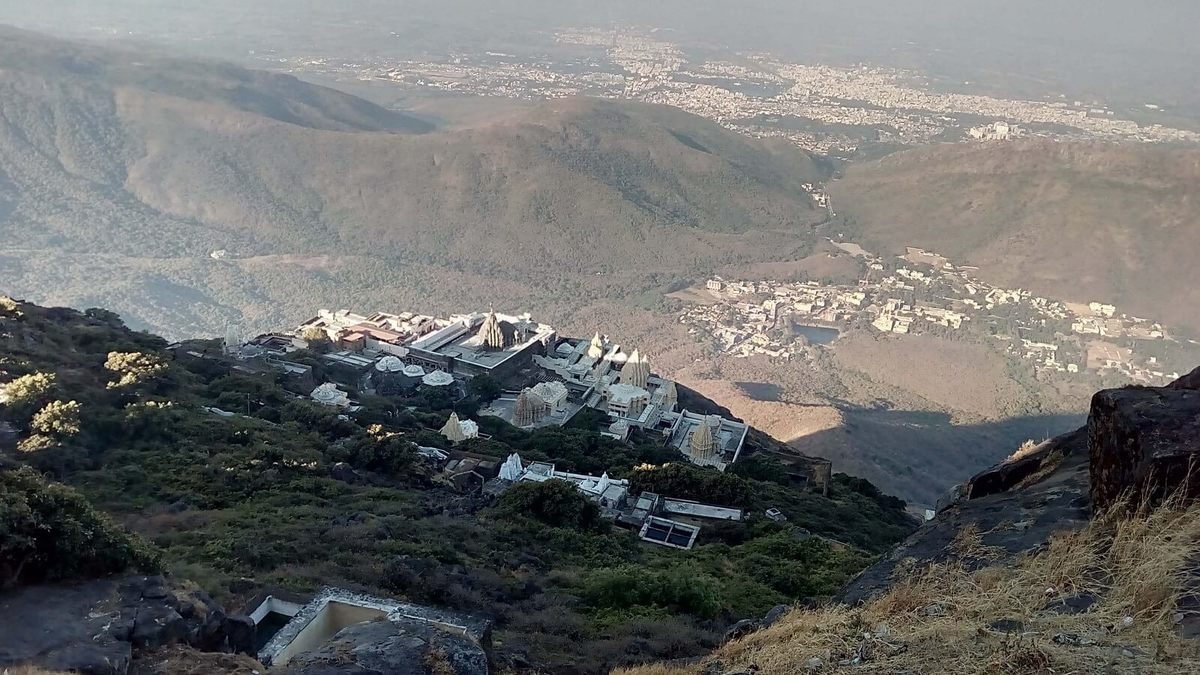
Another 1,500 steps and we are at our destination, the holy Ambaji temple. We I in particular are both pleased and amazed that we are already here. We concur it was the energy from the soft sun rays that rejuvenated us. Ironically, another two hours later it 's going to be the same sun which will, with its harsh forenoon rays, sap our energy if we aren ™t nimble during our descent.
It 's not yet 10 in the morning, and we begin our descent. The sun 's no longer kind, but we ™ll survive. We down another Amul Kool and start. And yes, a couple of biscuit packets too.
The best part of the descent is the juicy cucumbers we get to eat. Absolutely fresh, absolutely mouth-watering. The guy selling them sprinkles a mixture of salt and chili-powder. I can ™t recall ever eating cucumbers so early in the morning, but this was one exception I will remember for many, many years.
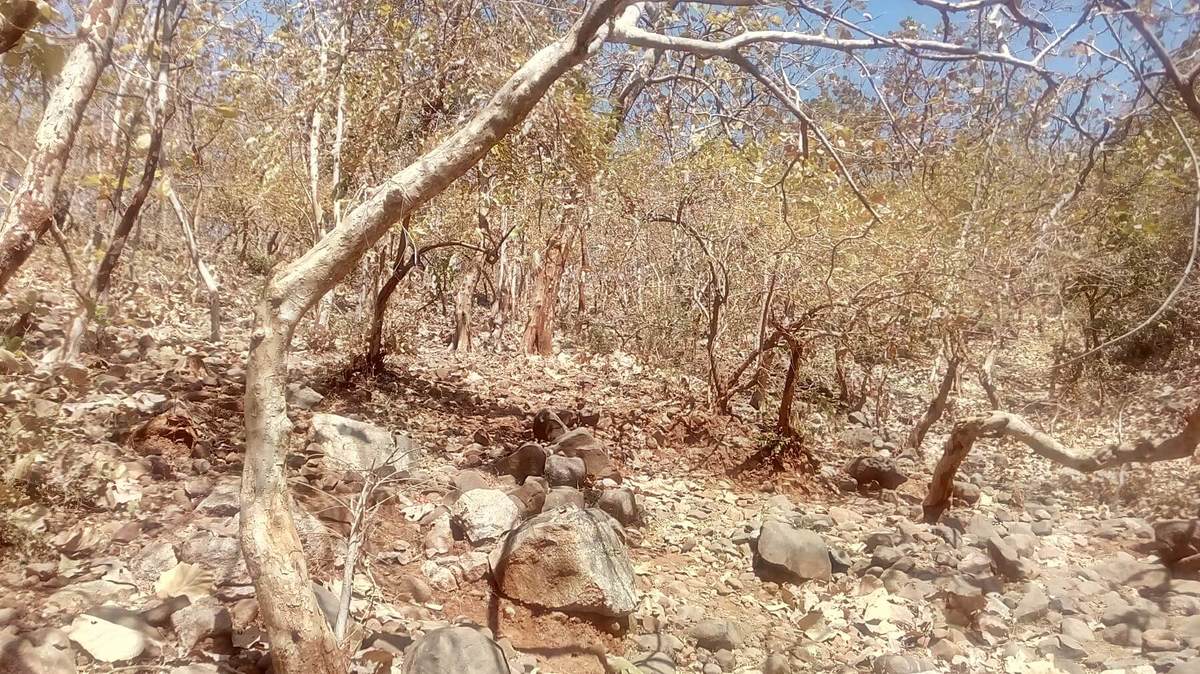
By the time we are back at the base, it 's nearly 11:30 AM. Sure we ™re tired and the real test will be on the following day, when our relatively untrained calf muscles will register their complaints by stiffening. But as of now, it has been one of the finest times of our life.
As is usual in most trips that one enjoys, we ™re already discussing dates for our next visit.
When is the best time to travel?
While there is no particular season laid down by the authorities, an overwhelming majority of travelers choose the winter season, mainly for two reasons:
1. Monsoon is not preferred due to safety reasons. Rains bring to life small streams all across the mountains. While they present a stunningly beautiful picture, they also make the steps very slippery, not to mention the reduced visibility during extreme rains (yours truly, in past, has had first-hand experience of climbing during one such thunderous, early-monsoon rains. Quite fascinating, but also quite scary.)
2. Summers, on the other hand, tend to sap away your body-fluid and energy. The sun sends the mercury soaring; temperatures hover in the mid forties. The heat that the black, rocky mountains dissipate becomes all too unbearable. Sun-stroke and dehydration can be the big risks climbers may face. No buddy, not a good time either.
Winter (roughly mid-October to mid-February), therefore, becomes the season of choice. And rest assured it 's the best time.
The journey and the schedule:
How long will the 5,000 steps take to climb obviously depends a great deal upon your physical status. However, an average climber would need around 3 hours to reach Ambaji and no more than 2 hours to descend.
The best time to start your climb is early morning. By 5:30AM, a very large number of people would have already begun and it ™d be unusual for numbers to swell after 7:00AM.
As for the descent, people start their journey down by around 9:30 AM. Anyone starting later than 11:00 AM faces the fatigue caused by the sun that would be directly overhead by the time you ™re back in the base.
Alternatively, people stay atop the mountain till late afternoon and begin their descent around 4:30 PM. This is a better option, since you get enough time to spend on the mountain and enjoy the scenic view all around. Just a small note: if you aren ™t very fit, resting for too long once you ™re on the top can actually stiffen your calf muscles and the journey down can cause a lot more pain.
Whereabouts:
Girnar is located on the eastern part of Junagadh, roughly 5 kms from both the central bus stand and the railway station. The nearest operative airport is Rajkot, about 100 kms away.
If you haven ™t been to Junagadh earlier, don ™t plan a whirlwind trip the way I did. There 's so much to see in Junagadh itself you should allot about 2-3 days for the city itself. There are enough number of hotels in all tariff brackets. There aren ™t too many tourist guides, but then you can enjoy doing the exploring and learning all by yourself. Avoid peak summers if possible.
A few words of caution:
Climbing 5,000 steps is no joke. It is certainly demanding, so if you haven ™t been physically active for some years, or if you are fifty or more, you ™ll surely want to consult your physician before you embark upon this wonderful but challenging journey. I am no fitness consultant, but this is what I did to prepare my body: for about a month before my Girnar trip, I climbed up-and-down my office stairs about 8 times a day. That made a total of around 1600 steps per day, and I ™m glad I did it. Plus some simple stretching exercises.
A couple of weeks before your climb, you may want to look at your diet. More protein (your good old tur daal is a great source), more fiber. I ™m not a foodie so I easily avoided street-food a fortnight ahead of the big day. And liquid.
Make sure you are wearing the right woolens in winter. The temperature at the mountain top will be a lot lower than that of the base, so don ™t get fooled by the warm air at the base. Wear at least one woolen.
Choose a sturdy, lightweight pair of shoes. While this is no Everest, every ounce of extra weight is a burden when you climb 5,000 steps. Unused or overused shoes are not recommended: the former may lead to blisters while the latter may have slippery soles. Some climbers prefer climbing bare-feet not advised for everybody.
It 's important to stay hydrated. Carry about 1.5 to 2 litres of water with you. More isn ™t necessary; there 's a good number hawkers to buy water from, all along the climb. I recommend a few chocolates too; its instant glucose charges up your energy-meter.
Last, and most certainly not the least, do not sacrifice safety for activities like clicking photos. In this age when a lot of us carry high-end cameras (I didn ™t), or cellphones with a reasonably good camera (I did), it 's easy to give in to the temptation of clicking photos and selfies at every other step, from crazy angles, given the fact that these mountains offer extraordinarily beautiful moments all the through the climb. What people forget is that at times, the stairs are narrow; a little, inadvertent push from a fellow-traveler can topple you. So make sure you are very careful while clicking photos.
All other conditions and precautions apply. Have a wonderful and safe journey. Theist or not, this is one climb you ™ll want to do. Trust me.
Customize your dream vacation with our best India tour packages.
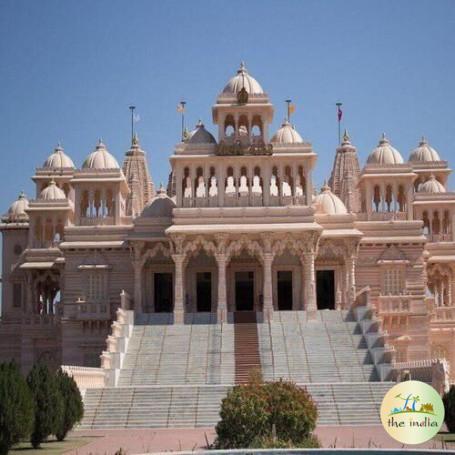
0(No Review)
9D/8N
Exciting Gujarat Tour Packages from Ahmedabad (8 Nights-9 Days)
![]() Gujarat, India
Gujarat, India
₹ 35,000

